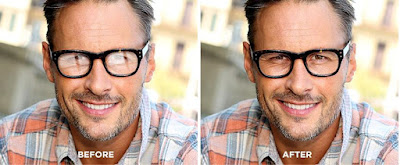Clear Vision, Flawless Look: Demystifying Anti-Reflective Coating for Optimal Clarity and Style
Introduction:
Ever wondered about the effectiveness of anti-reflective (AR) or non-glare coatings on your glasses? In this article, we will explore the benefits of this lens enhancement, drawing comparisons to help you grasp its significance.
Anti-Reflective or A.R. Coating: What is it?
Anti-reflective coating, also known as A.R. coating, is a specialized enhancement applied to both the front and back surfaces of eyeglass lenses. Its purpose is to improve light transmittance, reduce glare, and minimize reflections, resulting in enhanced visual clarity and a better aesthetic appearance. This coating can be found not only in glasses but also in optical instruments such as cameras, binoculars, and telescopes.
The Magic of Anti-Reflective Coating
AR coating is responsible for reducing reflections caused by light interacting with transparent surfaces, such as lenses, windows, or plastics. Without this coating, light can bounce off these surfaces, leading to a loss of clarity and contrast in the final image. AR coating becomes especially crucial for enhancing images in camera lenses, allowing for increased contrast and overall better visual quality.
Anti-Reflective A.R. Coating for Eyeglasses
While the benefits of AR coating are evident in optical instruments, its advantages for eyeglasses differ slightly. While the coating doesn't significantly improve contrast sensitivity for the human eye, it provides two essential benefits: reducing glare and enhancing the cosmetic appearance of the lenses.
Glare Reduction: A Clear Advantage
One significant advantage of AR coating on eyeglasses is its ability to reduce glare effectively. This coating is especially beneficial for reducing starburst patterns and halos around headlights at night or glare from computer screens. As a result, wearing AR-coated glasses can alleviate eye fatigue caused by squinting or straining to focus on small letters or numbers.
Cosmetic Appeal
AR coating also plays a crucial role in improving the cosmetic appearance of eyeglasses. Without this coating, reflections on lenses can obscure the eyes and hinder direct eye contact, particularly during job interviews or when interacting with clients. AR coating ensures that your eyes remain visible and the focus of attention, making a positive impression.
Quality Matters: Advanced A.R. Coatings
Not all AR coatings are created equal, and newer technologies offer additional benefits. These advanced coatings are more resistant to chipping, crazing, and flaking, ensuring the longevity of the lenses. They are also designed to be harder to smudge or scratch, making them ideal for active individuals and kids. Additionally, some coatings can block harmful blue light, which may improve sleep patterns and reduce digital eye strain.
Conclusion
Anti-reflective coating, or A.R. coating, offers a range of benefits, from reducing glare to enhancing the aesthetic appeal of eyeglasses. While it significantly improves the performance of optical instruments like cameras and telescopes, its advantages for eyeglasses lie in glare reduction and improved visual comfort. Investing in a high-quality AR coating can elevate your eyewear experience, ensuring clear vision and a polished look.























